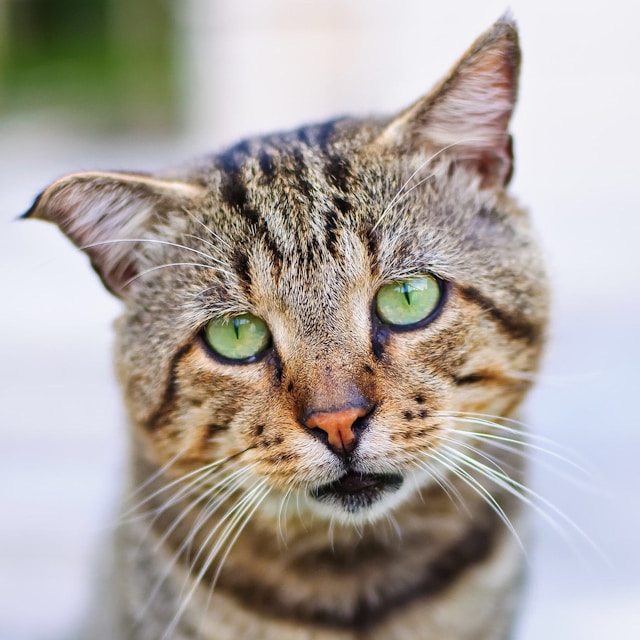LaPerm

| OFFICIAL NAME | LaPerm |
| COMMON NAME | LaPerm |
| PET HEIGHT | 6 to 10 inches |
| PET WEIGHT | 8 to 10 pounds |
| LIFESPAN | 10 to 15 years |
| GOOD WITH | cats, children, dogs, families, seniors |
| TEMPERAMENT | affectionate, sociable |
| INTELLIGENCE | high |
| SHEDDING AMOUNT | infrequent |
| PLAYFULNESS | high |
| ENERGY LEVEL | active |
| VOCAL LEVEL | when necessary |
| COAT LENGTH | long, short |
| COLORS | black/ebony, blue/gray, chocolate/brown/sable, cinnamon, cream/beige/tan, fawn, lavender/silver, lilac, red/orange, white |
| OTHER TRAITS | easy to groom, easy to train, friendly toward other pets, friendly toward strangers, good for first-time pet owners, good lap cat, high prey drive, hypoallergenic, tolerates being picked up |
These endearing felines are a relatively new breed, distinguished by their gentle dispositions and unusually wavy fur, resulting from a genetic mutation in the 1980s.
Because of their low-maintenance coats, they are well-known for being easy to care for and loving cuddles. LaPerms make excellent companion animals because they savor every second they spend with their human companions.
LaPerm Appearance
LaPerm cats can be recognized by their curly coats that mimic a perm on a human being. Soft waves and springy curls are typical features of their fur, with tight ringlets around the stomach, neck, and ears and looser waves elsewhere. LaPerms share a genetic mutation that is common to Rex Breeds. Still, they are unrelated to the Devon or Cornish rex breeds despite their curly appearance.
Their coats come in various colors and patterns, such as tortoiseshell, tabby, red, calico, or black, and can be either short or long. LaPerms have low shedding and an undercoat that resists matting, which makes them generally accessible to groom even with their textured coats.
The Mayo Clinic states that no cat is genuinely hypoallergenic, despite the belief held by some that LaPerms are. Still, they are a good option for allergy sufferers due to their low shedding.
These medium-sized cats have large ears, long legs, and plumed tails. Usually, they weigh eight to ten pounds. Their almond-shaped eyes, which can be any color, frequently convey their lively and attentive demeanor. Physical maturity in LaPerm kittens typically takes two to three years, with females maturing slightly later than males.
LaPerm Personality
An actual lap cat, the gentle and loving LaPerm loves the company of people. They look forward to cuddles on the couch with you, and when they do, they purr loudly to express how happy they are. According to the Cat Fanciers' Association, these devoted cats frequently express their love by nuzzling their head against yours and lightly touching your face with their paws. LaPerms are renowned for being outgoing, curious, and active individuals who enjoy being in social situations and engaging in physical contact. They are easygoing and carefree, usually approaching guests instead of running away.
Active LaPerms can be found playing when they're not looking for attention. These wise and clever felines might even take pleasure in a game of fetch with toys. They make adaptable companions because they typically get along well with kids, other cats, and dogs that are friendly to cats.
LaPerm Living Needs
The LaPerm is a laid-back and versatile breed that does well in various settings. Despite their high activity level, they are happiest when they have people to love them, toys to play with, and places to explore. They are great for apartment living because, despite their lively disposition, they are content to spend most of their time indoors.
Your LaPerm will frequently be found playing, exploring bookcases, or perching on your shoulders when it's not curled up on your lap. A tall cat tree in the center of the room will make them feel like kings and queens as they enjoy surveying their surroundings from elevated positions. They are highly vocal, so don't be shocked if they chirp or meow at you from above! LaPerms typically get along well with people and other animals. They need to be entertained, and you must spend quality time with them because they dislike being left alone for extended periods.
These cats are an excellent option for first-time pet owners because they are quiet, loving, and low maintenance.
LaPerm Care
LaPerm cats have curly or occasionally long coats, but grooming them is relatively straightforward. While short-haired LaPerms usually need little brushing, long-haired LaPerms benefit from weekly combing to avoid mats and tangles, and taking an occasional bath also helps keep their curls intact.
LaPerms require routine ear cleaning, nail clipping, and a clean litter box like any other cat. Even though they are active cats, feeding them a premium diet your veterinarian has prescribed is crucial. Keeping an eye on their food intake helps avoid obesity.
LaPerm Health
LaPerm cats are not prone to hereditary diseases, making them generally healthy pets. Their average lifespan is ten to fifteen years. The curly coat is a relatively recent breed with a strong barn cat heritage that developed from a mutation in a small number of cats. LaPerms have been crossed with cat breeds and non-pedigreed domestic shorthairs to preserve genetic diversity and avoid inbreeding.
Although any cat can spread illnesses, LaPerms are usually healthy. Although conscientious breeders screen their kittens for genetic health problems, routine veterinary examinations are crucial. Later in life, health problems may surface, so continuing observation and veterinary care are essential to preserving their well-being.
LaPerm Exercise Requirements
Since LaPerms are inherently active cats, encouraging them to exercise rarely presents a problem. They are excited to play with their owners and enjoy following their humans around the house.
They especially like to climb high places and bat around cat toys, so getting a tall cat tree for your house is a significant investment.
LaPerm Training
The LaPerm is a curious and perceptive breed that, more often than not, values pleasing its humans above all else. LaPerms are, therefore, very trainable.
Like dogs, cats learn desired behaviors best when they receive positive reinforcement. Playtime or affection can be more valuable rewards for good behavior than treats, as LaPerms are frequently more driven by your attention than food.
LaPerm History
Six kittens were born in 1982 to a brown tabby barn cat with short hair on a farm in Dalles, Oregon. One had a blue tabby pattern on her skin and was born bald. After eight weeks, this kitten surprised its owners, Richard and Linda Koehl, by developing a soft, wavy coat with a silky texture. The barn cats produced more kittens with similar curly coats over the following ten years. Enthralled, the Koehls looked into the genetics of this peculiar characteristic. They found that it was a result of a dominant gene spontaneously changing.
This small group of cats served as the starting point for the breeding program that created the LaPerm breed. The French word for "wavy" or "rippling" is "LaPerm," and the breed was recognized by TICA and CFA in 1996. The LaPerm was first introduced to the UK in 2002, and in 2004, it was recognized by the GCCF. Despite being uncommon and developing, the breed has become increasingly well-known worldwide.
LaPerm Fun Facts
The official term for a cat cross between a Munchkin and a LaPerm is "skookum." Many people find these tiny, curly-haired hybrids adorable.
Occasionally, LaPerm kittens are born hairless and grow their signature curly coat a few weeks later.
Get insurance plans with wide-ranging coverage options













